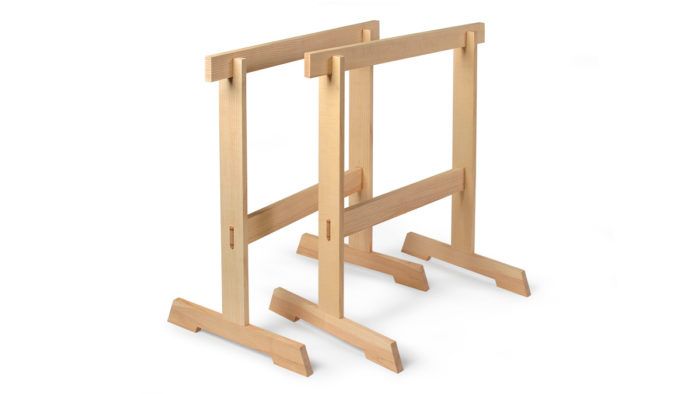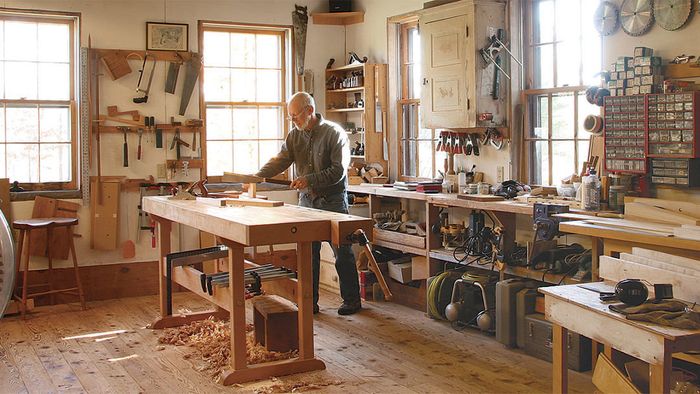
Synopsis: How innovative can sawhorses be? Pretty innovative, if they are based on a design by James Krenov. Unlike the clunky, splay-legged versions common to job sites and workshops, these are light, easy to move, and have a small footprint. Their upright design lets you position them close together for small glue-ups or other jobs, and they nest easily and take up little space when you stow them away. But don’t let the sleek design fool you: These babies can hold an impressive amount of weight. And each horse is made from just six pieces of stock, simply joined.
A few years ago, after moving into a small apartment, I needed a desk—and fast. I had a big slab of planed, live-edge walnut that would make a perfect top—but what to put it on? Then I spied the two sawhorses I made while studying at the College of the Redwoods, in the furniture-making program founded by James Krenov. Turns out, the horses balanced the mass of the slab perfectly. And their spare, elegant, and well-proportioned design actually made for a nice-looking desk that got tons of compliments from woodworkers and non-woodworkers alike.
But don’t let the good looks fool you. These are real workhorses, designed to be versatile and durable—holding up that desk is probably the lightest duty my horses have seen yet. And with straightforward mortise-and-tenon joinery, the horses also are easy to build. The basic design was developed by Krenov, but students add their own flair, as I have to the feet and joinery. I encourage you to do the same.
Why these are better

Every woodworker needs a stout pair of sawhorses. They’re great for rough-milling lumber and assembling projects—and can even be used as a sturdy base for a temporary worktable. But these horses are different from the standard types, made of 2x4s with splayed legs. Those clunky designs can be hard to use and don’t store very easily.
These horses are light and have a small footprint. They are easy to move and the long feet give the horses a wide stance that resists tipping. The upright design lets you position them close together for small glue-ups or veneer pressing jobs. Traditional sawhorses with splayed legs won’t cozy up as easily. This nesting ability is also great for stowing the horses when you’re done with them.
Despite their sleek profile, these horses can support hundreds of pounds. I often pile a big stack of lumber on top of them for storage or milling. I attribute this strength to the solid mortiseand-tenon joinery and an overall design that carries stresses downward instead of out so the joints aren’t pushed apart.
The stretchers not only add strength and stability, but they also are functional. The lower stretcher can hold clamps and lumber. The top stretcher is notched into the uprights and screwed in place without glue. It’s easy to remove and replace when it gets worn. This top stretcher also can act as a caul during a glue-up.
Building a pair is a half-day’s work
The beauty of these horses is their simplicity, and the materials and construction reflect that. They will get knocked around and loaded heavily, so choose materials accordingly. Avoid softer woods like poplar or pine. Hardwoods will last longer, but these are just workhorses, so consider your wallet, too. Ash, red oak, and hickory are low-cost options.

From Fine Woodworking #208
To view the entire article, please click the View PDF button below.
Fine Woodworking Recommended Products

Sketchup Class

Drafting Tools

Drafting Tools






Log in or create an account to post a comment.
Sign up Log in